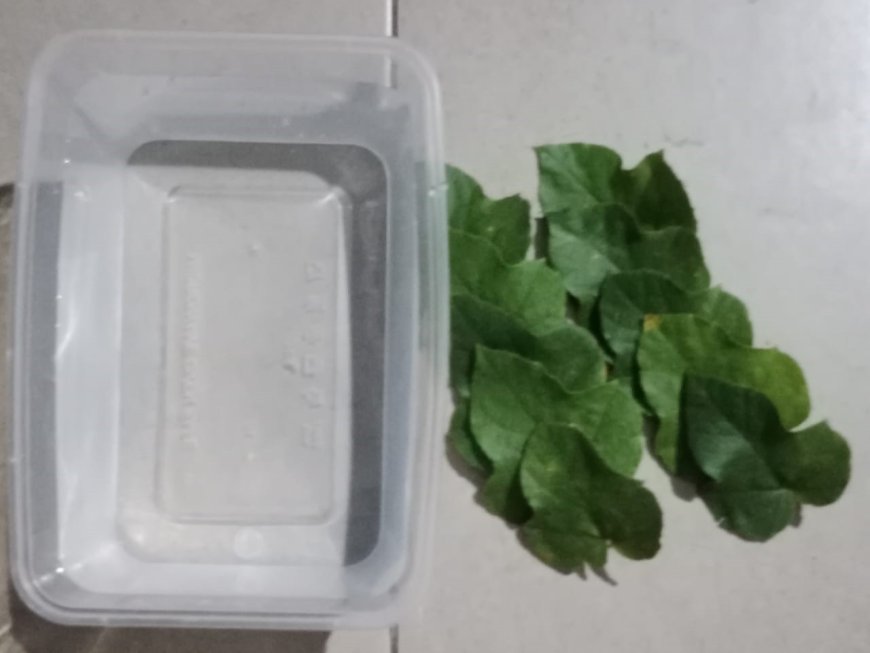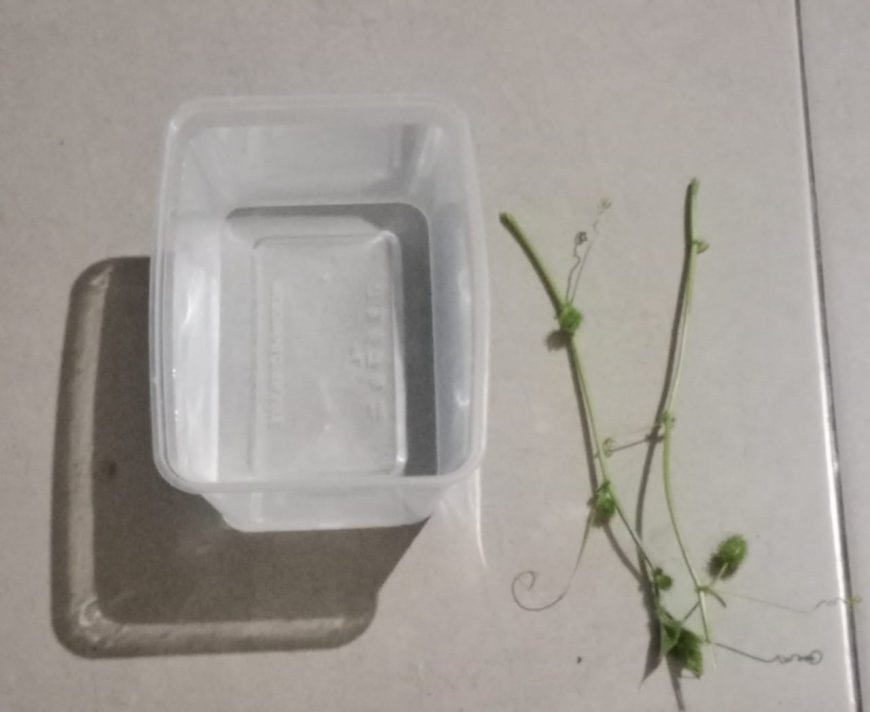Rambusa: The Health Secrets of a Rarely Known Wild Plant
Rambusa (Passiflora foetida) is a small fruit surrounded by a mesh structure formed from protective leaves (bractea). The fruit turns yellow when ripe. In various regions, rambusa is known by names such as kaceprek or selot, and is also called mini passion fruit or wild passion fruit. Rambusa is a wild plant with small but highly beneficial fruits.

Rambusa plants (Passiflora foetida) are often considered a wild weed that grows in various places. This plant has small fruits protected by a fine, net-like layer resembling thorns. Although frequently overlooked, rambusa actually holds numerous health benefits that are rarely known to the public.
In Bali, rambusa grows wild in forests, mountainous areas, and damp places. Its leaves are broad, while the fruit is small and has a sweet taste. Unfortunately, many people in Bali are still unaware that this plant has a variety of health properties.
Rambusa Plant (Photo Source: Personal Collection)
Characteristics and Habitat of Rambusa
Rambusa (Passiflora foetida) has broad leaves with a slightly hairy surface. Its small fruit is green when unripe and turns yellow to orange when ripe. As a climbing plant, rambusa has flexible stems that can twine around other supports. Despite its small size, the rambusa fruit has a distinctive sweet taste. It is protected by a structure resembling fine thorns that tightly wrap around it. This plant grows rapidly in various conditions, especially in humid tropical areas like Bali.
Health Benefits of Rambusa
Although rambusa is often considered a wild plant, some studies show that this plant has various remarkable health benefits:
- Treating Insomnia: Rambusa is known for its calming effects. The leaves are often used to make herbal tea believed to help with insomnia and other sleep disorders. The extract of rambusa leaves contains flavonoids that act as natural sedatives, making it beneficial for those who have trouble sleeping.
- Lowering Blood Pressure: The bioactive compounds in rambusa are believed to help reduce blood pressure. Some studies indicate that extracts from this plant can help dilate blood vessels, leading to improved blood flow and lowered blood pressure. Thus, consuming rambusa may be a natural solution for hypertension sufferers.
- Alleviating Digestive Disorders: The small, sweet-and-sour fruit of rambusa is beneficial for the digestive system. It is thought to relieve digestive issues such as constipation and bloating. The fiber content in rambusa fruit aids in smoothing the digestive process and preventing constipation.
- Anti-Inflammatory Properties: Some studies suggest that rambusa extract has anti-inflammatory properties. This means that the plant can help alleviate inflammation in the body, whether due to infections or chronic conditions like arthritis. The active compounds in rambusa work by inhibiting enzymes that cause inflammation, thereby helping to reduce pain and swelling.
- Boosting Immunity: The vitamin C and antioxidant content in rambusa are not only beneficial for combating free radicals but also strengthen the immune system. Regular consumption of rambusa can make the body more resilient to disease, particularly those caused by viral and bacterial infections.
How to Consume Rambusa
Rambusa can be consumed in various forms, both raw and processed. Here are some common ways to consume rambusa:
- Rambusa Tea: Fresh rambusa leaves are boiled until the water reaches a boil. This tea is consumed before bedtime to help with relaxation and improve sleep quality.
- Rambusa Fruit: Ripe fruit can be eaten directly or added to juices. Its small yet sweet flavor offers a refreshing taste enjoyed by local people.
- Topical Remedy: Crushed rambusa leaves can be used as a compress for wounds and skin issues, believed to expedite the healing process.
- Rambusa Oil: Extracts from rambusa seeds are also used as a natural oil with anti-inflammatory benefits, which can be applied to the skin to reduce irritation.
How to Process Rambusa
Rambusa (Passiflora foetida) is a wild plant with many health benefits. Its leaves, fruit, and roots can be processed into herbal remedies. Here are some ways to prepare rambusa as a beneficial herbal remedy:
1. Rambusa Leaf Tea for Treating Insomnia
Tea made from rambusa leaves is effective for helping with sleep problems and relieving stress.
Ingredients for Rambusa Leaf Tea (Photo Source: Personal Collection)
Ingredients:
- 400 ml water
- 5-10 fresh or dried rambusa leaves
Preparation:
- Wash the rambusa leaves thoroughly.
- Boil the water in a pot until it reaches a rolling boil.
- Add the rambusa leaves to the boiling water and let it simmer for 10-15 minutes.
- Remove from heat and strain the liquid.
- Drink this tea before bedtime to help with relaxation.
Rambusa Leaf Tea (Photo Source: Personal Collection)
2. Rambusa Fruit Remedy for Digestion
Rambusa fruit contains fiber that is beneficial for digestive health.
Ingredients for Rambusa Fruit Remedy (Photo Source: Personal Collection)
Ingredients:
- 5-10 ripe rambusa fruits
- 1 glass of water
Preparation:
- Wash the rambusa fruits thoroughly, then cut them in half.
- Blend the rambusa fruit with water until it becomes juice.
- Strain the juice to remove the pulp, if desired.
- Consume this juice to aid digestion.
3. Rambusa Leaves Remedy for Lowering Blood Pressure
Rambusa leaves can be used as a remedy for lowering blood pressure.

Ingredients for Rambusa Leaf Remedy (Photo Source: Personal Collection)
Ingredients:
- 10 rambusa leaves
- 3 cups of water (about 600 ml)
Preparation:
- Wash the rambusa leaves thoroughly.
- Boil the leaves in 3 cups of water for 20-30 minutes.
- Once the water reduces to 1 cup, remove from heat and strain.
- Drink this remedy twice a day to help lower blood pressure.
4. Rambusa Root Decoction for Pain Relief
Rambusa roots also possess anti-inflammatory and pain-relieving properties.

Ingredients for Rambusa Root Remedy (Photo Source: Personal Collection)
Ingredients:
- 1-2 fresh rambusa roots
- 3 cups of water
Preparation:
- Wash the rambusa roots thoroughly, then cut them into small pieces.
- Boil the roots in 3 cups of water for 30-40 minutes until the water reduces to 1 cup.
- Remove from heat and strain the liquid.
- Drink this remedy to help relieve muscle or joint pain.
5. Rambusa Oil for Skin Care
Extracts from rambusa leaves can be used as an oil to address skin issues.
Ingredients:
- A handful of fresh rambusa leaves
- Coconut oil or olive oil, as needed
Preparation:
- Blend or crush the rambusa leaves until smooth.
- Heat coconut oil in a pan over low heat.
- Add the blended rambusa leaves to the oil.
- Cook until the rambusa leaves release a fragrant aroma and the oil changes color.
- Remove from heat and strain the oil, storing it in a glass bottle.
- Use this oil to massage irritated or inflamed skin areas.
Rambusa (Passiflora foetida) in Bali is not merely a neglected wild plant, but a species rich in health benefits and medicinal potential. In the tradition of Usadha Taru Pramana, rambusa plays a key role as one of the herbal ingredients used to treat various ailments, ranging from sleep disorders to inflammation. With proper utilization, rambusa can offer a natural and sustainable solution for maintaining the health of the Balinese community in a holistic manner, in accordance with the principles of traditional Balinese medicine.































































